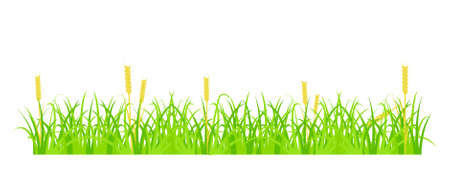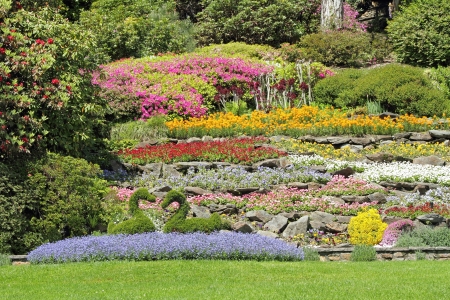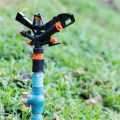Understanding Sustainable Gardening
Sustainability is more than just a buzzword in American gardening—its a practical philosophy that prioritizes responsible resource use, environmental stewardship, and long-term resilience. At its core, sustainable gardening means working with nature rather than against it. This approach takes into account local climate conditions, soil health, biodiversity, and—crucially—water conservation. For home gardeners across the U.S., sustainability involves making mindful choices about what you plant, how you water, and the ways you maintain your outdoor space. Water-wise strategies are especially important in regions facing drought or water restrictions, but they benefit gardens everywhere by reducing waste and fostering healthier plants. By understanding and embracing these key principles, American gardeners can create beautiful landscapes that thrive year after year while protecting our most precious natural resources.
Assessing Your Space and Resources
Before diving into the design phase of your sustainable garden, it’s essential to take a thoughtful inventory of your available space and resources. This groundwork will help you make the most eco-friendly decisions possible, from conserving water to supporting pollinators. Start by walking through your yard at different times of day and in various seasons to notice patterns that might influence plant growth and water usage.
Soil Evaluation: The Foundation of Success
Healthy soil is the backbone of every thriving garden. Conduct a simple soil test—many county extension offices in the U.S. offer these services affordably—to determine pH, texture, and nutrient content. Sandy soils drain quickly but may need more organic matter, while clay holds water but can cause root rot if not amended. Knowing your soil type helps guide plant selection and irrigation methods.
| Soil Type | Drainage | Best Amendments |
|---|---|---|
| Sandy | Fast | Compost, aged manure |
| Clay | Slow | Gypsum, coarse sand, compost |
| Loam | Balanced | Minimal; maintain with compost |
Sunlight Assessment: Mapping Microclimates
Understanding how sunlight moves across your garden is key for both plant health and water efficiency. Track sun exposure in the morning, afternoon, and evening. Most vegetables need 6–8 hours of direct sunlight, while some native perennials or shade-loving herbs thrive with less. Creating a sun map can help you position plants where they’ll naturally flourish with minimal supplemental watering.
Sun Exposure Guide:
| Area Description | Typical Hours of Sunlight | Recommended Plants |
|---|---|---|
| Full Sun (South/West) | 6–8+ | Tomatoes, peppers, sunflowers |
| Partial Shade (East) | 3–6 | Lettuce, spinach, ferns |
| Full Shade (North) | <3 | Mosses, hostas, native woodland flowers |
Microclimates: Hidden Opportunities for Diversity
Your yard likely contains microclimates—small areas where temperature, wind, or moisture levels differ due to fences, buildings, or trees. Take note of sheltered corners that stay warmer in winter or low spots that collect runoff after rain. These areas can be leveraged for growing sensitive plants or setting up rain gardens to manage stormwater sustainably.
Water Access: Planning for Efficiency and Conservation
A truly sustainable garden works with your existing water resources rather than against them. Identify all sources of water: rain barrels, downspouts, greywater systems, or traditional irrigation. Group plants with similar water needs together—a concept known as hydrozoning—to maximize efficiency and minimize waste. Installing drip irrigation or soaker hoses can further reduce evaporation compared to overhead sprinklers.
Sustainable Water Source Table:
| Source Type | Main Benefits | Considerations |
|---|---|---|
| Rain Barrel/Harvesting | Cuts municipal water use; free resource | Keeps gutters clean; position near high-need beds |
| Drip Irrigation | Dramatically reduces evaporation; precise application | Takes time to set up; check filters regularly |
| Greywater Reuse | Makes use of household water; eco-conscious | Avoid using on edible crops unless properly filtered |
This careful assessment sets the stage for a resilient garden layout that nurtures both your plants and the planet—all while keeping local conditions front and center.

3. Designing a Water-Wise Layout
When planning a sustainable garden, the layout is your secret weapon for saving water and supporting the local environment. A smart approach is to organize your space into practical zones based on how much water different plants actually need. For example, you can create a “hydrozone” near your hose or rain barrel for thirstier veggies and herbs, while keeping drought-tolerant natives and succulents together in drier spots further from the house. This simple zoning trick not only minimizes water waste but also makes maintenance easier for the whole family.
Grouping by Water Needs
Start by grouping plants with similar watering requirements together. Native wildflowers, lavender, and sage thrive with little irrigation and do well on slopes or sunny borders. In contrast, lettuces, tomatoes, and other leafy greens prefer more frequent moisture and should be placed where they’re easy to reach with a watering can or drip line. This way, you avoid overwatering some plants just to keep others alive—a common mistake in mixed beds.
Incorporating Drought-Tolerant Natives
Choosing American native species isn’t just about patriotism—it’s about practicality! Plants like California poppy, purple coneflower, and black-eyed Susan are adapted to local conditions and need less supplemental water once established. These tough beauties also attract pollinators, boosting your garden’s biodiversity while reducing your workload.
Practical Layout Tips
To make your garden even more water-wise, consider using mulch to lock in moisture around roots, setting up swales or shallow trenches to guide rainwater where it’s needed most, and placing thirsty plants in shadier microclimates if possible. Raised beds can help direct water efficiently to vegetable roots while discouraging runoff. By thoughtfully arranging your garden with these strategies in mind, you’ll create an eco-friendly backyard that’s both beautiful and resilient—perfect for busy American families who want to grow green without wasting blue.
4. Eco-Friendly Plant Selection
When planning a sustainable garden layout, choosing the right plants is essential for creating an eco-friendly and water-wise landscape that thrives in your local environment. By selecting American native and pollinator-friendly plants adapted to your regional climate, you not only reduce maintenance and water needs but also support local biodiversity and resilience.
Why Native Plants Matter
Native plants have evolved alongside local wildlife and climate conditions, making them naturally more drought-tolerant and disease-resistant. They provide food and habitat for birds, butterflies, bees, and other beneficial creatures, strengthening the ecosystem right in your backyard. This approach helps maintain healthy soil, conserves water, and reduces the need for synthetic fertilizers or pesticides.
Choosing Pollinator-Friendly Varieties
Incorporating pollinator-friendly species ensures that your garden becomes a haven for bees, butterflies, moths, and hummingbirds. These plants often offer abundant nectar and pollen while blooming at various times throughout the growing season to support pollinators year-round.
Examples of Regional Native & Pollinator-Friendly Plants
| Region | Native Plants | Pollinator Attractors |
|---|---|---|
| Northeast | Black-Eyed Susan (Rudbeckia hirta), New England Aster (Symphyotrichum novae-angliae) | Bees, butterflies |
| Southeast | Purple Coneflower (Echinacea purpurea), Coral Honeysuckle (Lonicera sempervirens) | Butterflies, hummingbirds |
| Midwest | Prairie Dropseed (Sporobolus heterolepis), Butterfly Milkweed (Asclepias tuberosa) | Monarchs, native bees |
| Southwest | Pineleaf Penstemon (Penstemon pinifolius), Desert Marigold (Baileya multiradiata) | Bees, native moths |
| West Coast | California Poppy (Eschscholzia californica), Oregon Grape (Mahonia aquifolium) | Mason bees, butterflies |
Tips for Successful Eco-Friendly Planting
- Research your USDA hardiness zone: Choose plants proven to thrive in your specific region.
- Diversify plant selection: Aim for a mix of flowers, grasses, shrubs, and trees to create layered habitats.
- Avoid invasive species: Stick to locally native plants to prevent disrupting local ecosystems.
- Select blooms with varying flowering periods: This supports pollinators across the seasons.
- Group similar water needs together: This makes irrigation more efficient and reduces waste.
Selecting eco-friendly plants is not just about sustainability—it’s about connecting with nature and building a resilient garden that flourishes for years to come. By making thoughtful choices now, you’re helping protect America’s unique ecosystems—right from your own backyard.
5. Efficient Irrigation and Mulching
One of the most impactful ways to support a sustainable garden layout is by optimizing how you water and protect your soil. Traditional sprinklers might seem convenient, but they often waste water through evaporation and runoff. Instead, drip irrigation systems deliver water directly to plant roots, minimizing waste and ensuring each drop counts. Many American gardeners appreciate that drip lines can be set up with timers for easy maintenance and even coverage—perfect for busy family schedules.
Another increasingly popular method in eco-friendly gardening is rainwater harvesting. By setting up rain barrels or cisterns to collect rainfall from your roof, you reduce dependence on municipal water supplies and make use of what nature provides. This approach is not only practical during dry spells or droughts, but it’s also embraced in many U.S. communities where water conservation is a top priority. Be sure to check local guidelines on rainwater collection, as some states have specific regulations.
To further conserve moisture and boost soil health, layer your garden beds with organic mulch such as straw, wood chips, or shredded leaves. Mulch acts like a protective blanket—keeping soil cool, reducing evaporation, suppressing weeds, and gradually improving soil structure as it breaks down. In backyard gardens across America, this simple step helps build vibrant, resilient plantings while cutting down on watering needs and weeding chores. Whether you’re growing veggies or native pollinator plants, these efficient irrigation and mulching practices go a long way toward making your garden truly sustainable.
6. Low-Impact Maintenance Practices
Building a truly sustainable garden goes beyond the initial design—it’s about nurturing your green space with thoughtful, low-impact care. By fostering habits that support the health of your plants and soil, you help your garden become more resilient and self-sustaining, all while reducing your environmental footprint.
Start Composting: Nature’s Recycling Program
Composting is a cornerstone of eco-friendly gardening. By turning kitchen scraps, yard waste, and leaves into nutrient-rich compost, you feed your garden naturally without relying on synthetic fertilizers. Compost improves soil structure, retains moisture, and encourages beneficial microorganisms, supporting plant health from the ground up. Plus, it cuts down on landfill waste—a win-win for your backyard and the planet.
Integrated Pest Management (IPM): Working With Nature
Instead of reaching for chemical pesticides at the first sign of trouble, integrated pest management helps you take a smarter approach. IPM combines monitoring, prevention, and targeted treatments to keep pests in check while protecting pollinators and other helpful insects. Encourage natural predators like ladybugs or birds, use barriers or traps when needed, and opt for organic controls as a last resort. This way, your garden stays balanced and healthy with minimal intervention.
Minimize Chemical Inputs
Overusing synthetic fertilizers and pesticides can harm soil life and contaminate local waterways. Focus on building soil fertility through composting and crop rotation, and use mulch to suppress weeds naturally. When fertilizer is necessary, choose slow-release or organic options that are gentler on the environment. Reducing chemicals not only protects local wildlife but also creates a safer outdoor space for your family and pets.
Cultivating a Self-Sustaining Garden Culture
Adopting low-impact maintenance practices is about more than just following rules—it’s about shifting to a mindset that values stewardship over convenience. As you practice composting, IPM, and reduced chemical inputs, you’ll notice healthier plants, fewer pest problems, and a thriving ecosystem right outside your door. These habits set the stage for a garden that flourishes year after year—with less work and more rewards for both you and the environment.


